
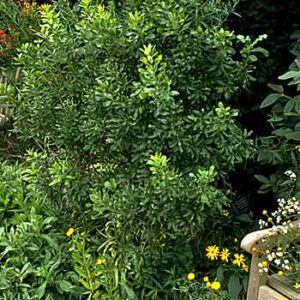
Bayberry, Northern
As a landscape plant, Bayberry is excellent for massing, borders or combining with broadleaf evergreens. It responds well to a periodic pruning to keep it’s form. An added advantage is that Bayberry has no serious insect or disease problems! Suited for Zones 2-9a.
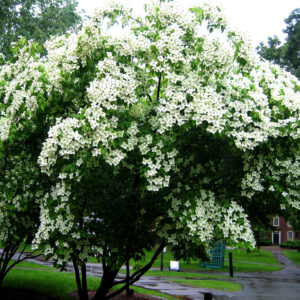

Dogwood, Kousa
Rounded shape with horizontal branching growing to about 20 feet at maturity.
Large, pointed, white to pinkish bracts produced three weeks after our native flowering dogwood. Fruits medium, reddish pink, raspberry-like, very attractive to birds. Foliage scarlet in fall.
CANNOT SHIP TO CA
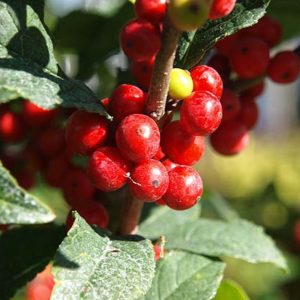
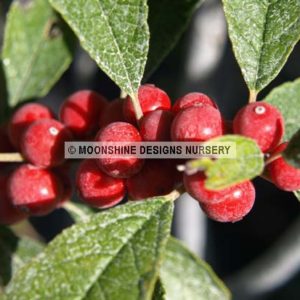
Holly, Winterberry, Afterglow
One of the best plants for fall and winter color.
Female plants produce bright red berries in profusion in early fall while leaves are still green and remain until mid-winter.
Berried stems often used in seasonal dried arrangements.
Likes acidic soil, will tolerate wet, swampy conditions.
Native to the northeastern United States.
Winterberry is dioecious, so both male and female plants are needed for fruit production.
Zone: 4-9
Height: 5-8 Feet
Spread: 5-8 Feet
Winterberry’s bright red berries provide color in winter after the leaves have fallen off. The plant grows in sun or partial shade and a rich, well- drained soil, although it tolerates swampy areas. The fruits are often eaten by birds. Also used at Christmas for decorations.
Use Jim Dandy as the male pollinator.
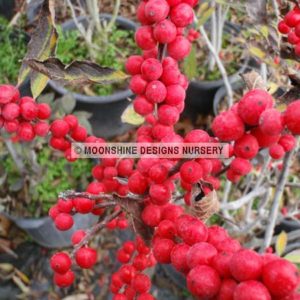
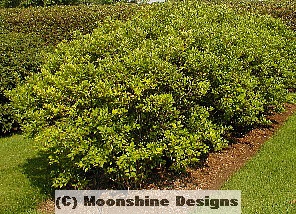
Holly, Winterberry, Berry Heavy
A spectacular winter show with its heavy set of large, bright red berries. This selection rivals all other winterberry selections for its sheer mass of fruit. Use Jim Dandy as the male.
Zone 4-7
6-8 feet
Full Sun to Partial Shade
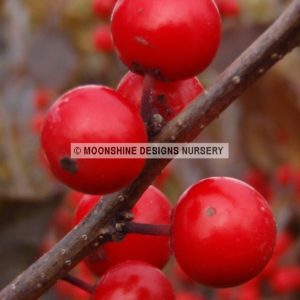

Holly, Winterberry, Berry Nice
BERRY NICE® Winterberry Holly
The dark red berry display is so vivid, the original plant was selected by sight at a distance of 1/4 mile. It’ll make you stop and take notice. Good clean foliage.
This lovely native is well adapted to wet soils, so it’s a perfect choice for near a pond or stream. The fruit appears in autumn and remains until early spring when the returning birds feast on the showy fruit. Berry Nice makes a great plant for cut arrangements. Planting a male selection in near proximity greatly improves the fruiting of Winterberry.


Holly, Winterberry, Jim Dandy Male
One of the best plants for fall and winter color.
Female plants produce bright red berries in profusion in early fall while leaves are still green and remain until mid-winter. This male variety is required for berry production on the females. Allow one male for every three females. Plants should be within 50′ of each other for best fruit set.
Berried stems often used in seasonal dried arrangements.
Likes acidic soil, will tolerate wet, swampy conditions.
Native to the northeastern United States.
Winterberry is dioecious, so both male and female plants are needed for fruit production.
Zone: 4-9
Height: 9 Feet
Spread: 9 Feet
May be pruned shorter.


Holly, Winterberry, Southern Gentleman Male
One of the best plants for fall and winter color.
Female plants produce bright red berries in profusion in early fall while leaves are still green and remain until mid-winter. This male variety is required for berry production on the females. Allow one male for every three females. Plants should be within 50′ of each other for best fruit set.
Berried stems often used in seasonal dried arrangements.
Likes acidic soil, will tolerate wet, swampy conditions.
Native to the northeastern United States.
Winterberry is dioecious, so both male and female plants are needed for fruit production.
Zone: 4-9
Height: 9 Feet
Spread: 9 Feet
May be pruned shorter.
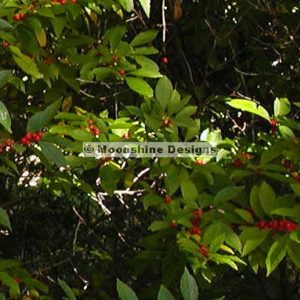
Holly, Winterberry, Sprite
One of the best plants for fall and winter color.
Female plants produce bright red berries in profusion in early fall while leaves are still green and remain until mid-winter. This male variety is required for berry production on the females. Allow one male for every three females. Plants should be within 50′ of each other for best fruit set. Use Southern Gentleman as the male.
Berried stems often used in seasonal dried arrangements.
Likes acidic soil, will tolerate wet, swampy conditions.
Native to the northeastern United States.
Winterberry is dioecious, so both male and female plants are needed for fruit production.
Zone: 4-9
Height: 3-4 Feet
Spread: 3-4 Feet
May be pruned shorter.
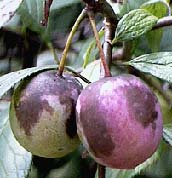
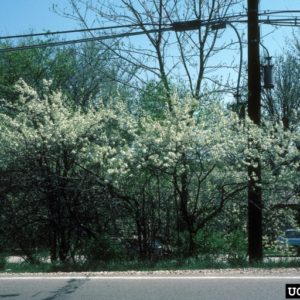
Plum, American (NATIVE)
CANNOT SHIP TO CA, WA, AZ
Hardiness Zones: 5-9
Also known as wild plum. Often grown as a shrub but can be grown as a tree. Edible, sweet fruit. Not large, but these 1″ yellow to red to purple fruit are sweet and very juicy. Makes fantastic plum jam! Rapid growth to 12-20′. Prefers full sun, but will tolerate some shade. Common as an understory tree in nature.
White, fragrant flowers in early spring.
Grown as single leader, not shrub form. Container grown trees are 36-48″ tall.
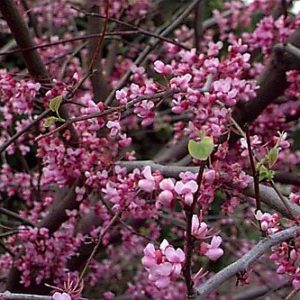
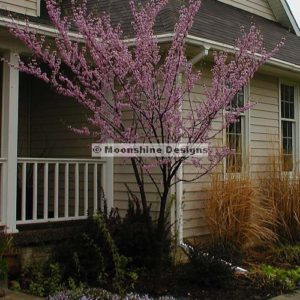
Redbud, American Eastern
American Redbud or Eastern Redbud and sometimes referred to as the Judas tree as it dates back to biblical times.
Very handsome, small tree with gracefully ascending branches, reaches 20 to 30 feet. Perfect reddish purple flowers open to a rosy-pink, March-April. Emerging heart-shaped reddish purple leaves turn green, then yellow-green in fall. Origin: New Jersey to Florida, west to Missouri and Texas and northern Mexico. Zones 4-10
Great as a single specimen, in a group, in a shrub border, and especially nice in woodland and naturalized type landscapes.
2 Gallon size trees are 3 yr. old . Fast growing up until about 12′, then growth slows somewhat. Excellent for use under canopy of large trees and should have afternoon shade in southern zones.
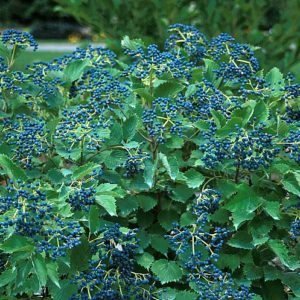
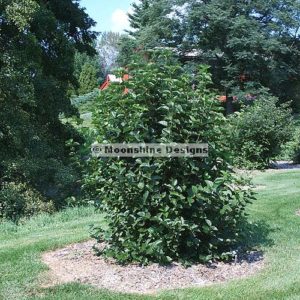
Viburnum, Blue Muffin™
A new compact selection of Arrowwood Viburnum! The perfect sized plant for residential landscapes. This compact beauty has loads of white spring flowers, and an impressive display of rich blue berries. Makes a great low hedge or foundation plant. Good container growing plant. Attracts songbirds. Berries are NOT edible.
The habit is dense and multistemmed with arching branches. The foliage is glossy dark green, fall colors are yellows, reds and purples.
Hardiness: USDA Zone 3-9
Size: 3 to 5 feet 3 to 4 feet wide
Exposure: Very adaptable! Full sun, partial shade or shade
Soil: Adaptable to many soils, moderate moisture
Uses: Not only is this plant showy, it’s very utilitarian. Use it as a small hedge, a foundation plant or on the edge of a woodland setting.
